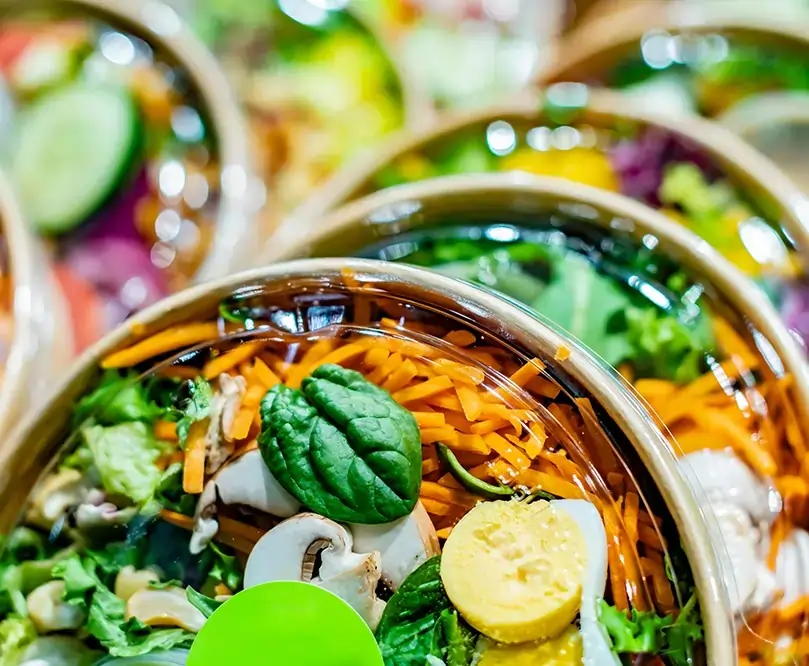In today’s conscientious food industry, the imperative to overhaul packaging practices is undeniable. Embracing sustainability, we delve into a multifaceted approach, from pioneering materials like compostable plastics and wool for insulation to recycling technologies, curbing reliance on virgin resources.
The advent of active and intelligent packaging systems revolutionizes preservation, extending shelf life while empowering consumers with real-time product insights. Streamlined designs prioritize functionality and eco-friendliness, from resealable closures to portion-controlled packaging.
Yet, true transformation necessitates a holistic perspective, encompassing sustainable sourcing, responsible manufacturing, and collaborative efforts across the supply chain. Through collective action and consumer education, we chart a course towards a circular economy, where food packaging catalyzes positive environmental change, ensuring a brighter, greener future for generations to come.
Table of Contents
Key Points
Sustainable Materials: Explore biodegradable alternatives like compostable plastics, plant-based polymers, and wool for packaging, reducing plastic waste and pollution.
Intelligent Packaging: Implement active and intelligent packaging technologies such as oxygen scavengers and RFID tags to extend shelf life, monitor freshness, and reduce food waste.
Minimalist Designs: Embrace minimalist and functional packaging designs to reduce material usage, enhance convenience for consumers, and minimize environmental impact.
Sustainable Supply Chains: Adopt sustainable practices throughout the supply chain, including responsible sourcing, manufacturing, and distribution, to promote a circular economy for food packaging.
Collaborative Efforts: Foster collaboration between stakeholders, including food producers, packaging manufacturers, retailers, and consumers, to drive systemic change and create a more sustainable future for food packaging.
In the realm of food packaging, the familiar adage “out of sight, out of mind” no longer holds. As consumers become increasingly aware of the environmental consequences of traditional packaging methods, there’s a growing imperative to rethink how we package our food. In this comprehensive exploration, we delve into the various facets of this pressing issue, from innovative materials to intelligent packaging systems and sustainable supply chains.
Sustainable Materials
At the heart of the revolution in food packaging lies the quest for sustainable materials. Biodegradable alternatives, such as compostable plastics and plant-based polymers, offer promising solutions to the plastic waste crisis. Notably, the use of wool in chilled packaging represents a remarkable breakthrough, harnessing the natural insulating properties of this abundant material. By transitioning away from fossil fuel-derived plastics, we can mitigate the environmental impact of packaging waste and move towards a circular economy.
Advances in Recycling Technologies
In parallel with the development of sustainable materials, advances in recycling technologies are reshaping the landscape of food packaging. By harnessing the power of recycled content, we can reduce our reliance on virgin resources and minimize the carbon footprint of packaging production. Through innovative recycling processes, we have the opportunity to close the loop and create a more sustainable future for packaging materials.
Intelligent Packaging Systems
The integration of active and intelligent packaging technologies marks a paradigm shift in how we approach food preservation and safety. Active packaging systems, with their ability to interact dynamically with food products, offer unprecedented opportunities to extend shelf life and enhance freshness. Meanwhile, intelligent packaging systems equipped with sensors and RFID tags empower consumers with real-time information, fostering trust and transparency in the products they purchase.
Minimalist and Functional Designs
In the quest for sustainability, less is often more. Minimalist and functional packaging designs prioritize efficiency and consumer experience while minimizing environmental impact. From resealable closures to portion-controlled packaging, these design innovations enhance convenience and usability without compromising product integrity. By streamlining packaging materials and optimizing space utilization, we can reduce waste and usher in a new era of eco-friendly packaging solutions.
Holistic Approach to Sustainability
Revolutionizing food packaging demands a holistic approach that transcends individual components to address the entire supply chain. Sustainable sourcing practices, responsible manufacturing processes, and efficient logistics are essential pillars of this endeavor. Collaboration between stakeholders—food producers, packaging manufacturers, retailers, and consumers—is paramount to driving systemic change and fostering a culture of sustainability across the industry.
Conclusion
In conclusion, the imperative to revolutionize food packaging is clear. By embracing innovative materials, technologies, and design principles, we can chart a course toward a more sustainable future for packaging. Through collective action and consumer education, we have the power to minimize waste, conserve resources, and create a circular economy that benefits both people and the planet. Together, we can build a brighter future where food packaging is not just a necessity but a force for positive change.
As we embark on this journey towards sustainable food packaging, it’s important to recognize that no single solution exists. Rather, it’s the cumulative impact of diverse initiatives—from material innovation to supply chain optimization—that will pave the way for a truly sustainable future. By fostering collaboration, driving innovation, and prioritizing environmental stewardship, we can transform the way we package and consume food, leaving a legacy of sustainability for generations to come.
Read More Articles
- Mastering Typography in Web Design
- Exploring Typography Trends for Digital Design in 2024
- Unlocking Sustainable Economic Growth Through Innovation
- Navigating the Financial Landscape of Executive Education and MBA Programs
- Understanding Information Technology: The Backbone of Modern Business
- Understanding Algorithms: Definition, Functionality, and Real-Life Applications
- Understanding Machine Learning: A Comprehensive Exploration
- Unlocking the Power of Machine Vision: Revolutionizing Industries
- Unlocking the Power of Expert Systems: Enhancing Decision-Making with AI
- Unlocking the Power of Natural Language Processing
- Unlocking the Secrets of Artificial Intelligence
- Optimizing Logistics with AI: Revolutionizing Efficiency in Package Routing


